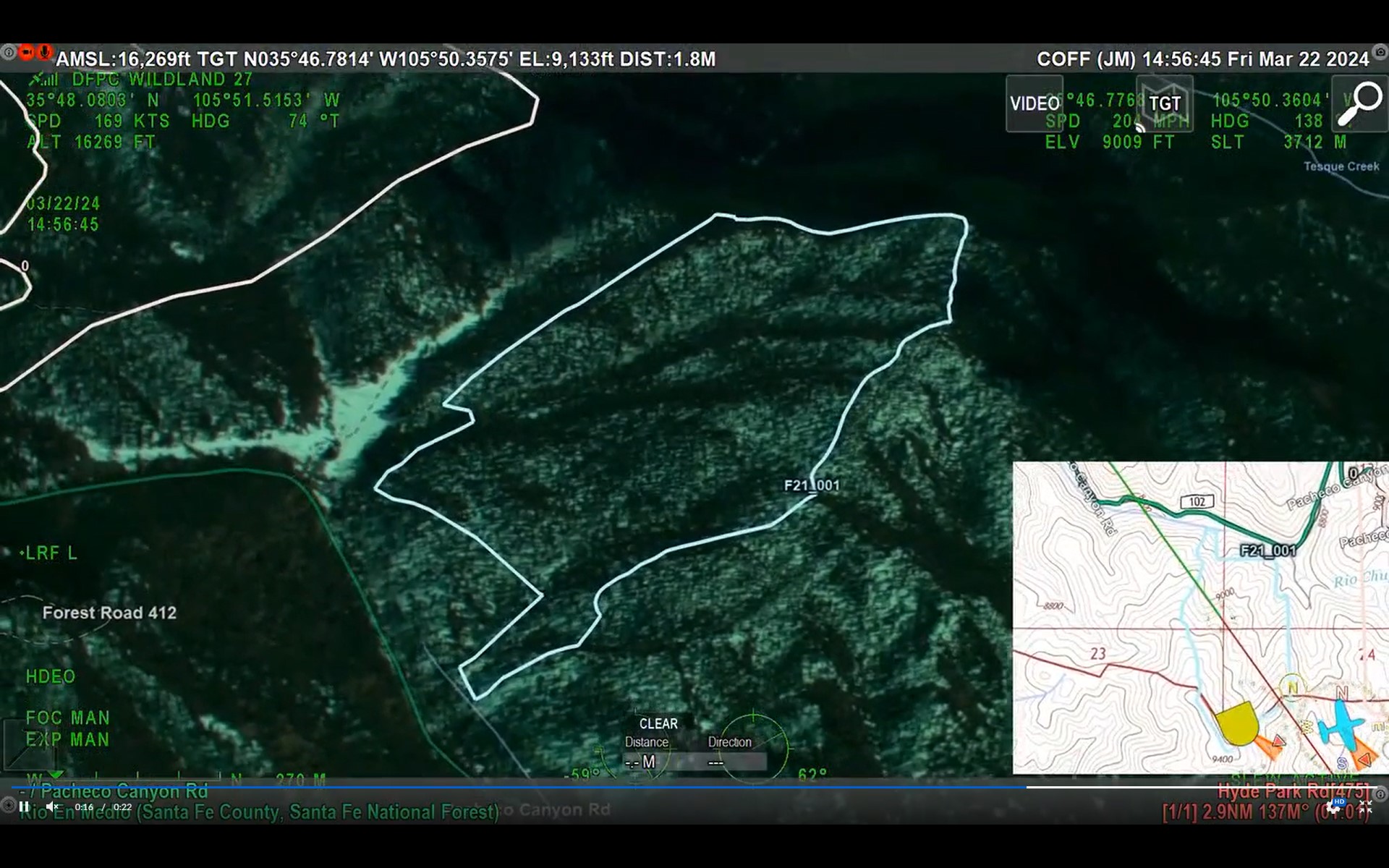 A fixed wing aircraft with infrared flew over the Pacheco Canyon pile burn project in the Espanola Ranger District. Heat was detected on the first flight identified by the bright white light in Photo 1. Courtesy/SFNF
A fixed wing aircraft with infrared flew over the Pacheco Canyon pile burn project in the Espanola Ranger District. Heat was detected on the first flight identified by the bright white light in Photo 1. Courtesy/SFNF
 The second flight detected no heat within and outside the unit perimeter. Courtesy/SFNF
The second flight detected no heat within and outside the unit perimeter. Courtesy/SFNF
SFNF News:
SANTA FE — As spring weather brings warmer temperatures and high winds to northern New Mexico the Santa Fe National Forest (SFNF) wants to share with our communities that fire managers utilize a variety of techniques to monitor, and patrol prescribed fire projects from the 2023-2024 fall/winter season.
SFNF fire managers treated around 5,000 acres of hazardous fuels through prescribed fire projects which included the Golondrino and American Park projects in the Cuba Ranger District (RD), Rincon and Gobernador projects in the Coyote RD, San Juan East and Mesa Verde projects in the Jemez RD, and the Pacheco and Hyde Park projects in the Española RD. Efforts then shifted to patrolling and monitoring prescribed fire units to ensure fire stayed within the project boundary and was eventually extinguished.
Fire managers have several tools available to determine if vegetation is still burning. First, fire crews monitor, and patrol prescribed fire units daily applying a technique called cold trailing which refers to feeling the ground with their bare hands for subsurface hotspots. If heat is detected, fire crews will dig out these areas and mix with snow, water, or soil to extinguish burning materials. In addition to cold trailing, fire crews can also attach thermal cameras to a cell phone that help identify heat that is not visible or felt while patrolling.
Following our work on the ground, the final step in our monitoring and patrolling plan involves aerial monitoring. Each prescribed fire is different and requires a unique set of tools to call the fire out. The SFNF ordered a fixed wing aircraft with advanced infrared capability. The aircraft flew over all the prescribed burn units and found only one heat source (Photo 1). This heat source was subsequently identified and addressed by ground personnel. Having found that single heat source, fire managers made the decision to conduct another flight over all the prescribed fire units, which resulted in no additional detection of heat sources. Fire Managers of each prescribed burn will patrol the prescribed fire units several more times this spring as a precaution before determining an appropriate time and date to declare each prescribed burn unit out. Updates will be provided when each prescribed fire unit has been declared out.
These prescribed fire projects maintain and improve wildlife habitat, prevent forest overcrowding, and lessen the severity of wildfires. The suppression of fire, a changing climate, and development in the wildland urban interface (WUI) has created unhealthy forests and landscapes. The US Forest Service, with the help of our partners, has created the Wildfire Crisis Strategy, a 10 year strategy to protect people and communities and improve forest health and resilience.
To learn more about our Santa Fe National Forest prescribed fire program please visit our website or find information on our social media (Facebook and X). To learn more about changes to the US Forest Service prescribed fire program visit the Forest Service website.

